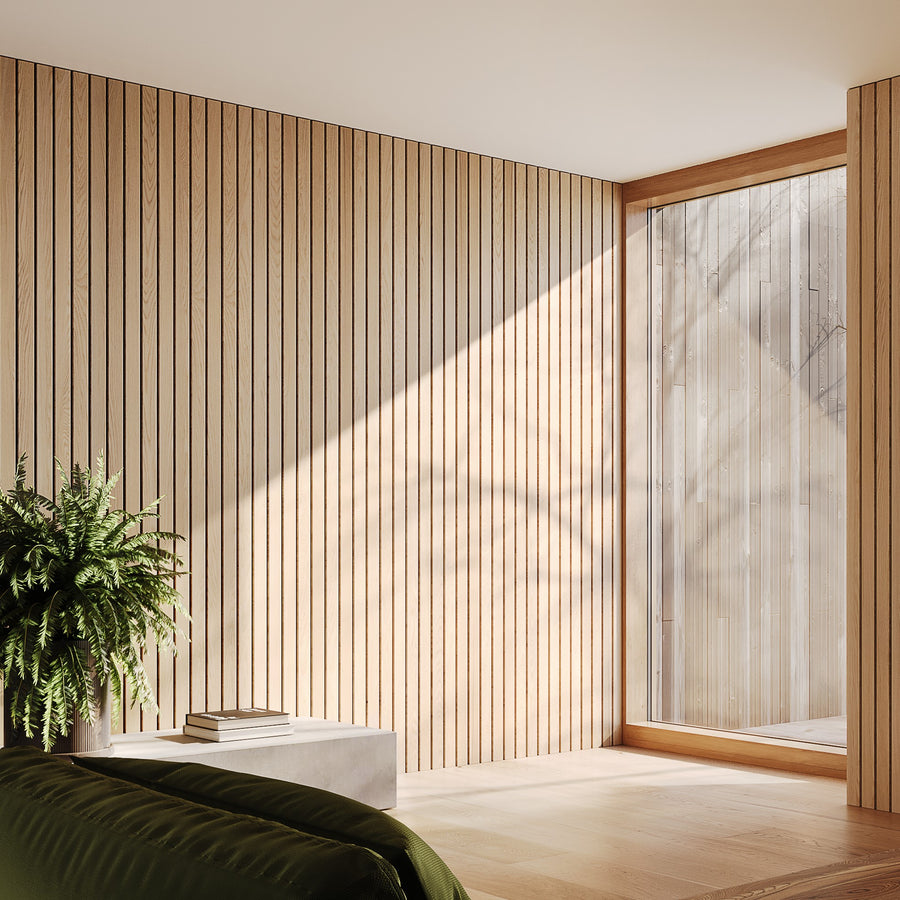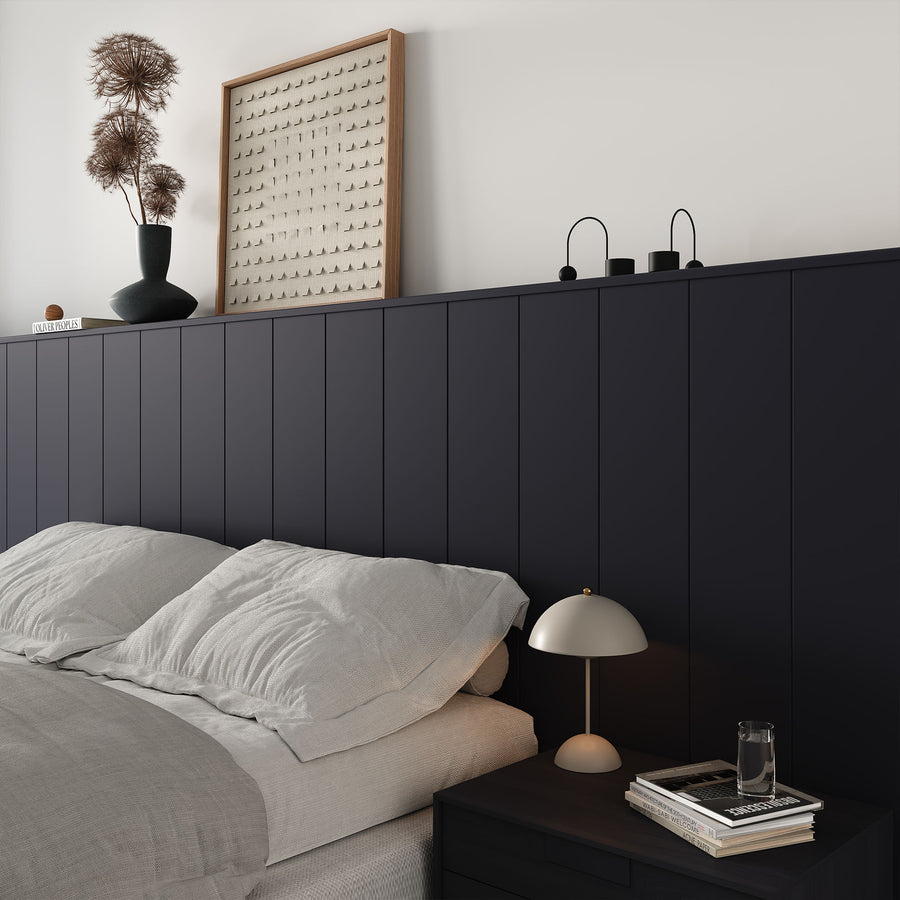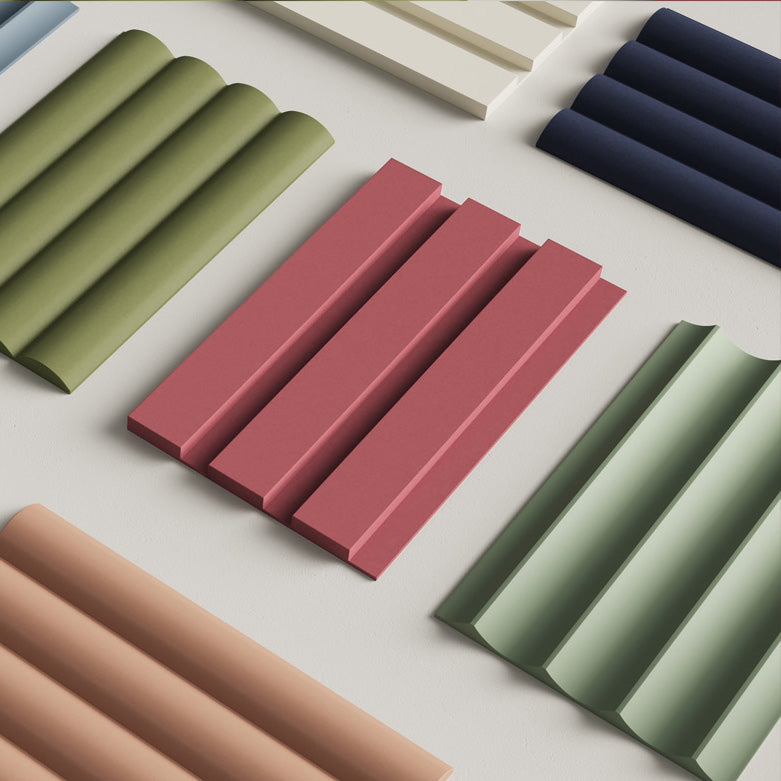10 Room Dividers That Bring a Midcentury Feel to Any Space

Room dividers have long been a staple of interior design, serving both functional and aesthetic purposes.
During the mid-20th century, these pieces became iconic, thanks to their versatility and sleek design. Rooted in the minimalism and elegance of midcentury aesthetics, room dividers effortlessly blend form and function.
They create distinct zones in open layouts while adding a touch of retro flair to modern homes. Whether crafted from wood, glass, or metal, they channel the clean lines and natural materials that defined the era.
In this blog, we’ll explore ten room dividers that capture the essence of midcentury style.
From bold geometric patterns to warm wooden slats, these designs pay homage to the past while fitting seamlessly into today’s spaces. Ready to give your home a midcentury vibe?
Let’s dive into the best room dividers to transform your space.
1. Midcentury Elegance with a Sculptural Wood Shelf Divider
2. Rotating Wood Plank Divider Brings in Timeless Midcentury Charm

This white oak wood plank room divider captures the essence of midcentury design, proving that room dividers can be both functional and stylish.
The oak wood plank room dividers create a clear division between the stairway and dining areas without closing off the space, allowing light to stream through into the rest of the home.
The warm wood tones and clean lines reflect the natural materials and simplicity that defined the midcentury era.
Slatted dividers gained prominence in the mid-20th century as a way to zone spaces while maintaining flow, and today, they’ve returned as a top trend in modern interiors.
Ideal for open layouts, this design gives your space structure and style, combining midcentury charm with contemporary appeal.
3. The Skew House Prayer Room Sliding Door Divider
The Skew House in Kerala, India, designed by Thought Parallels Architecture, masterfully combines intentional design with cultural significance.
The house’s unique skewed structure ensures the prayer room is perfectly aligned with traditional orientations, showcasing how architecture can respect both function and spiritual practices.
Meanwhile, the sliding door divider, crafted with frosted glass and rich wooden frames, is more than just a partition, it’s a thoughtful design element that allows light to flow while maintaining privacy.
Frosted glass subtly diffuses sunlight, creating a serene glow that complements the warm wood tones. This material choice ensures a tranquil atmosphere for spaces like the prayer room or adjoining areas.
To make things even better, the terrazzo flooring adds a layer of sophistication, with its polished, speckled finish reflecting natural light throughout the room.
The wooden wall paneling behind the seating area ties the space together, blending modern aesthetics with a nod to mid-century design.
This setup is perfect for homes where functionality meets intentionality. Whether you're looking to separate living areas or create a peaceful retreat, this design caters to those who value thoughtful, purposeful spaces.
It's a harmonious blend of tradition, modernity, and practicality, ideal for those who appreciate design that goes beyond aesthetics.
4. Function Meets Midcentury Charm with Corner Walnut Divider
If your kitchen feels a little too open and you’re craving a touch of separation, this corner walnut wood slat divider might just be your new best friend.
It doesn’t slam the door on open-concept living but subtly suggests that the kitchen deserves its own vibe. The vertical walnut slats create just enough division to carve out the kitchen space while keeping things light, open, and effortlessly stylish.
Made from warm walnut, this divider ties in perfectly with the surrounding cabinetry. It’s like the kitchen and divider had a secret meeting to ensure they’d match.
The nod to midcentury design is unmistakable, with its focus on natural materials and clean, linear forms. Plus, the open slats mean you get privacy for your culinary adventures without turning the kitchen into a cave.
For anyone with an open floor plan, this divider is a practical yet stunning solution. It’s perfect for creating a visual break while avoiding the commitment of a full wall.
Pair it with muted tones, sleek furniture, and maybe a vintage light fixture, and you’ve got a space that subtly exudes style.
And let’s be honest, it’s also a lifesaver for hiding the aftermath of a cooking spree while your guests mingle nearby.
5. Walnut Wood Slat Room Dividers for a Midcentury Feel
Lately, wooden slats have been making a big comeback, just like marble countertops or those retro 70s wood panels that are all over design blogs. These wood slat room dividers have that same timeless appeal but with a modern twist, as they can be rotated 360º to allow for changes in light and airflow.
If you’ve been loving the dividers we’ve talked about earlier, this one ties it all together. It echoes the wood tones of the dining chairs and shelving, creating a cohesive look that’s practical, stylish, and perfect for anyone chasing that midcentury vibe.
6. Hollywood Hills Midcentury Wooden Wall Panels
Originally designed by architect Philip Kimmelman in 1957, this Hollywood Hills home is a masterclass in midcentury design with post-and-beam architecture.
Central to its aesthetic are the wooden wall panels, seamlessly blending with the tongue-and-groove ceilings and white oak built-ins. These panels provide a warm, natural backdrop that enhances the home’s clean lines and airy layout.
Updated by Bruce Bolander, the home carefully balances its historical charm with modern functionality.
The extensive use of glass frames picturesque views of the backyard and pool, creating a natural extension of the interior space. The wood panels ground the design, contrasting beautifully with the playful accents of citrus green cabinetry and indigo tiles.
This space is perfect for anyone craving the iconic indoor-outdoor flow of midcentury homes.
Whether you’re lounging poolside or enjoying a quiet meal indoors, the wooden elements anchor the design in timeless sophistication while evoking the laid-back vibes of 1950s Hollywood.
7. Geometric Wood Divider for a Midcentury Feel
Unlike the earlier featured slat dividers, which focus more on sleek simplicity and seamless zoning, this divider brings a more dynamic and functional approach to the table.
The open shelving makes it multipurpose, perfect for displaying decorative items, storing essentials, or simply adding a bit of personal charm to a shared space.
While the slat dividers prioritize uninterrupted flow and minimalism, the geometric design leans into creating distinct areas while encouraging creativity and utility.
Its design also sets it apart from the translucent and fluted glass dividers we’ve discussed before.
Where those leaned heavily into creating a light, airy atmosphere, the geometric divider is bold, tactile, and commands attention.
It works beautifully in homes with industrial or eclectic styles, adding warmth and depth to what might otherwise feel cold or stark.
Ideal for design enthusiasts or those who enjoy functional decor, this divider is as practical as it is artistic. If you’re looking for a room divider that offers both form and function, this piece might just tick all the right boxes.
8. Midcentury Rotating Walnut Wood Slat Dividers
This walnut wood slat divider isn’t just there to look good, it rotates.
It’s not your typical static partition; it’s a sleek, dynamic piece that lets you adjust light, privacy, and space with ease.
Want to brighten up the dining room? Turn it open. Looking to create a cozier, more intimate atmosphere? Close it up.
It’s a design element that adapts to your needs. The warm walnut tones bring a classic midcentury theme, perfectly complementing the modern marble dining table and minimalist black chairs.
Add in thoughtful lighting and lush greenery, and you’ve got a space that feels fresh, functional, and stylish all at once.
Historically, wood slat dividers were a staple in 1960s interiors, valued for defining spaces without completely closing them off. Today, they’re enjoying a well-deserved revival.
This design is perfect for anyone who values flexibility and style.
Whether you’re creating ambiance or adding privacy, this divider delivers both. Plus, its rotating feature is sure to be a conversation starter. It’s a functional, versatile solution that makes any space feel sophisticated and unique.
9. Japanese-Inspired Midcentury Sliding Panels
The Fletcher House, a 1963 gem by New Zealand architects Hall & Mackenzie, is a time capsule of midcentury modern elegance.
Drawing heavily from Japanese design, this post-and-beam masterpiece features sliding shoji-style panels framed in rich mahogany and teak.
These panels divide spaces effortlessly while maintaining an open flow, a hallmark of both Japanese architecture and midcentury modern design.
The mahogany and teak paneling covering the walls complements the divider, creating a warm, cohesive backdrop.
The influence of Frank Lloyd Wright’s organic architecture shines through in the harmonious integration of wood, space, and light. This attention to detail reflects the vision of John and Beatrix Fletcher, the home’s original owners, who were inspired by their travels in Japan.
Perfect for anyone who appreciates timeless design and cultural fusion, these sliding panels are functional art, preserving privacy while letting natural light filter through. They’re also proof that great design doesn’t age, it just gets better with time.
10. Timeless Appeal of Wooden Foldable Room Dividers
These foldable wooden dividers, crafted with a natural finish, embody both style and function.
Made from solid wood with louvered panels, they echo midcentury trends where organic materials and practical designs were staples of interior decor.
The louvers bring a playful interaction of light and shadow, while also allowing air circulation, features that harken back to traditional plantation shutters of the early 20th century.
Wooden finishes, as seen here, have been making a strong comeback, particularly in the form of foldable screens.
This revival connects to a broader trend of embracing vintage aesthetics and eco-friendly materials in modern interiors.
These dividers recall the cozy, adaptable charm of the 70s, when natural wood tones dominated homes, while still fitting seamlessly into contemporary spaces that value flexibility and warmth.
In previous sections, we’ve explored wood slat dividers and panel screens that define spaces with fixed layouts.
This folding design, however, adds mobility and versatility, making it an excellent choice for renters or anyone who frequently reconfigures their home.
Pairing these dividers with retro-inspired furniture, like minimalist armchairs or warm-toned textiles, enhances the midcentury theme while keeping the look approachable.
With their ease of use, these dividers can double as statement pieces or functional tools for smaller homes.
Whether dividing a bedroom from an adjacent workspace or creating a soft separation between living areas, this design is perfect for anyone seeking a harmonious blend of history and modern practicality.
Conclusion
Midcentury-inspired room dividers are more than just functional, they are versatile design elements that can transform how a space feels and flows.
From adding privacy to defining distinct areas, these dividers effortlessly blend practicality with style.
They serve as conversation starters, breaking up open layouts while preserving that airy, spacious vibe midcentury design is known for. Their clean lines, natural materials, and retro charm make them timeless additions to any home.
Whether you're drawn to the warmth of classic wooden designs, the geometric appeal of latticework, or the sleekness of modern interpretations, there’s a room divider to suit your personal style.
These pieces not only pay homage to the golden era of design but also adapt seamlessly to today’s interiors, making them a worthy investment.
Start exploring room dividers today and bring a touch of midcentury elegance into your home to reimagine your space with timeless sophistication.












































Please provide more info on
8. Midcentury Rotating Walnut Wood Slat Dividers
Leave a comment